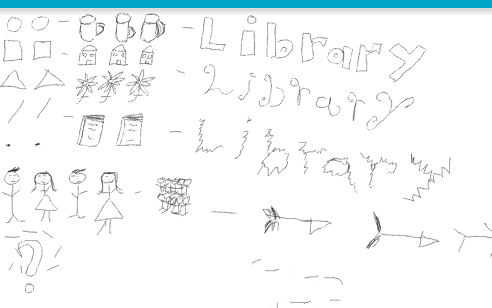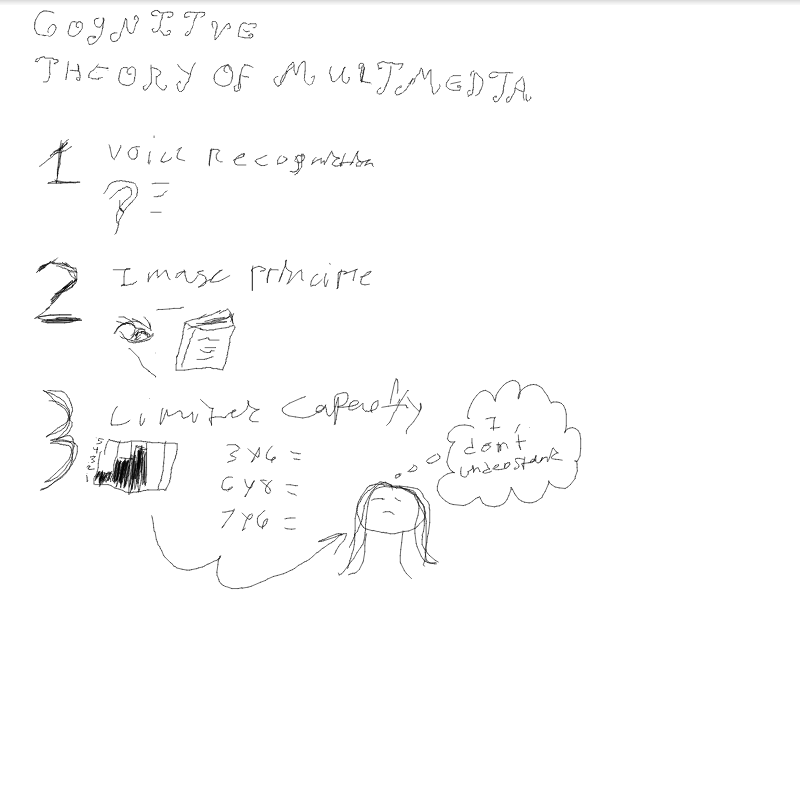
This week in my blog I would like to reflect on the process of multimedia learning principles.
Some of the media we read this week is based on a post written by the university professors of the University of Victoria and a media video by Richard Mayer. I was surprised by how many learning techniques we have not heard before but have done before in the past, some of the cognitive theories of learning are the dual coding theory, the limited capacity, active processing. None of these theories I have heard before but have experienced in my past learnings.
Dual coding: is the process of separating our brain’s channel waves from visual to verbal, our understanding of words and visions can be comprehended differently, we can keep the words and image stored in our brains in different ways and different understandings.
Limited Capacity: This is pretty self explanatory function but to give it some small context this is the function that are brain can only handle so much information at once. People we find have three different types of ways of learning and ways to retain memory, some belive these are myths as said in the previous blog. We can be easily overed whelmed and not retain all information that we learned earlier.
Active processing: We learn not through just the power of hearing a speech but also visuals and examples can help us understand a new concept, active processing is the function to help us select and organize what information goes where into our brains.
To ties this all together we also take the factors of how we learn multimedia to what principles we use and coordinate this altogether, with coherence, signaling, redundancy and spatial is just some of the main principles when understanding multimedia. The 12 principles help us reach our goals of what we want to achieve in our learning material and practices.
One example of multimedia principles I have learned in the past is the basic coherence principle which is based on visual that are represented by text, sharing simple visuals such as powerpoints slides, charts or images in a novel can help the mind comprehend the topic. With these exsintence of principle you can also find the not everyone uses the principles to help them learn in their daily lives or even to help them with multimedia.
An example of one of the principles is the Voice principle, This principle I find this the perfect example of using the human voice to a robotic one. Example of learning a language, when we listen to the audio on duolingo or roestta stone in’s usually the voice of a regular human having a conversation in that language and not just a robot speaking to you like on google translate. Hearing the human voice helps the brain use the voice principle under understand our language learning better especially with harder languages such as German, Japanese, Korean or Russian.
Finally to finish off with the last question is the art of sketchnoting, sketchnoting is a great tool to help using the mind for a creative writing and corolates with this weeks of using different principles.
My Sketchnoting



zonyyang 2021-12-01
Hi,
I really like your blog style! The website background is so cool! The video you choose as an example of the voice principle is perfect! Your sketch note is so creative, thank you for sharing!
Jun Yang
queenieyao 2021-12-05
Hi
Thank you for sharing your Sketchnoting. It looks wonderful. And these learning theories are new to me as well.
qixingyu 2021-12-06
Hi,
this is Qixing Yu, thanks for your sharing. This video is so fun, and your sketchnote is so good. I am try to make sketchnote like you.
atomin 2021-12-06
Hi, Gabi. Thank you for sharing your summary on learning principles and sketch-noting. I agree on your point that human voice is better compare to robotics in terms of sentimental aspects. Your sketch-noting perhaps could be better haha